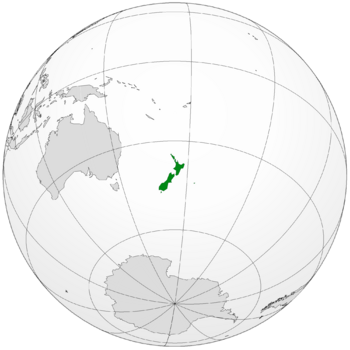Yangaea: Difference between revisions
No edit summary |
No edit summary |
||
| Line 10: | Line 10: | ||
|national_anthem = <!--''[[name of/link to anthem]]''--> | |national_anthem = <!--''[[name of/link to anthem]]''--> | ||
|royal_anthem = <!--''[[name of/link to anthem]]''--> | |royal_anthem = <!--''[[name of/link to anthem]]''--> | ||
|other_symbol_type = | |other_symbol_type = National Animal | ||
|other_symbol = | |other_symbol = ''Way Keo'' (Eagle Ray) | ||
|image_map = Yangaea_on_globe.png<!--e.g. LocationCountry.svg--> | |image_map = Yangaea_on_globe.png<!--e.g. LocationCountry.svg--> | ||
|alt_map = <!--alt text for map--> | |alt_map = <!--alt text for map--> | ||
| Line 124: | Line 124: | ||
==Geography== | ==Geography== | ||
Yangaea is a chain of volcanic islands, meaning there are both active volcanoes and major tectonic fault lines throughout the islands. North Island, South Island, and Xate are the three largest islands, but there are also many minor islands, most of which are in union with Yangaean government. | |||
==Politics and government== | ==Politics and government== | ||
=== | ===Government=== | ||
Yangaea operates with the two person oligarchy previously described. Stalemates are rare, but given that each chief does have ultimate veto power, they are very possible. As part of The Revelation, the chiefs also jointly appointed an individual to represent interests abroad, Arikiwi. Both chiefs live in Xate, as does Arikiwi, although the chiefs often split time living in their respective constituent islands. | |||
===Foreign relations=== | ===Foreign relations=== | ||
Currently, the only countries with which Yangaea has formal relations are The United Pacific States and The People's Republic of Texas. | |||
==Economy== | ==Economy== | ||
===Energy=== | ===Energy=== | ||
We got windmills. | |||
==== | ==Religion== | ||
Nearly all of Yangaean citizens (95.65) consider themselves to be adherents to the traditional folk religion that was originally indigenous to the area. The religion is similar to Native American animism or Japanese shinto, in that there is an extensive pantheon of gods, each of which presides over a specific focus. The most cultural singificant god is Tangaroa, the god of the sea. | |||
{{APSIA}} | {{APSIA}} | ||
Revision as of 03:03, 13 March 2019
The Community of Yangaea | |
|---|---|
|
Flag | |
| Motto: "The World's Nation." | |
| National Animal Way Keo (Eagle Ray) | |
 | |
| Capital | Xate |
| Largest | Yang |
| Official languages | English-Maori creole |
| Ethnic groups (1988) |
|
| Demonym(s) | Yangaean |
| Government | Oligarchy |
| Notable Historical Events | |
• Original British Settlement | 1840 |
• The Revelation | 1991 |
| Area | |
• Total | 268,021 km2 (103,483 sq mi) |
| Population | |
• Estimate | 3,550,000 (76th) |
| Currency | Yang (YNG) |
| Time zone | UTC +13 |
| Driving side | left |
| Calling code | +822 |
Yangaea, officially the 'The Community of Yangaea', is a small island country off of the coast of Perth. The nation identifies itself as a socialist anarchy, but generally operates as an oligarchy, with the power being shared by two elected leaders.
History
Ancient native history (pre-1840)
The islands were originally inhabited by a population called the Maori, who likely arrived from other nearby islands. The island was undiscovered by the developed world until its discovery by Brittanian explorers in the late 1600s. The native population at the time of discovery was around 250,000, almost all of which lived as a part of one tribe in southern Yangaea. The tribe depended on fishing and hunting the local iguanas for sustenance.
Colonization and Collapse (1840-1872)
After the British colonized Perth, they looked to also take what they called "New Perth", or modern day Yangaea. They sent in around 2,000 men in June of 1840 to build a city and "civilize" the natives. 6 months later, a British general came to check on the colony. The white men had completely accepted the native culture, and abandoned Christianity for the native folk religion. In addition, around 75% of the native women had been impregnated by the European settlers. Not long after the settlers and natives had completely assimilated into one single society. When a British ship returned in early 1872 to check in on the colony's progress, the ship was captured and converted into a European-themed amusement park.
The Silent Years (1872-1991)
Ignoring the occasional execution of foreign explorers, the new nation remained completely detached from the international world for over 100 years. During this time there were many important technological, cultural, and administrative breakthroughs. The North Island became the main source of food for the nation, as fertile soil and a huge coastline allowed for grain farming and fishing, respectively. This economic development reflected a reverse result in South Island, where the population became very centralized around factories and eventually cities. This urbanization resulted in a dramatic population increase, which is still seen today; North Island holds 20.2% of the entire population of the nation, while South Island has 74.0% (the rest live in minor outlying islands). The cultural disparity is what inspired the government structure seen today. One Chief is elected, via compulsory voting, to represent each island (see Politics and Government). Another notable development during this time was the rise of wind power, all starting when a farmer (called "Wind-Guy in local folklore) hooked his windmill, previously being used for smashing grain, up to magnets and wires. He created the first wind turbine, which he powered his lights and house with. The rest of the nation soon caught on, and nearly all of electrical energy comes from wind turbines.
Modern Era (1991-present)
In 1990, the election of Chieftess Scott in South Island brought immediate change. Not only was she the first elected female, but also the first chief to have ever visited a foreign country. She immediately proposed The Revelation, a plan to open up Yangaea to the rest of the world. This proposal included opening immigration, sharing of technology, as well as the construction of foreign embassies. This plan was approved by Chief Adams of North Island in 1991, and began the construction of the capital building in Xate.
Geography
Yangaea is a chain of volcanic islands, meaning there are both active volcanoes and major tectonic fault lines throughout the islands. North Island, South Island, and Xate are the three largest islands, but there are also many minor islands, most of which are in union with Yangaean government.
Politics and government
Government
Yangaea operates with the two person oligarchy previously described. Stalemates are rare, but given that each chief does have ultimate veto power, they are very possible. As part of The Revelation, the chiefs also jointly appointed an individual to represent interests abroad, Arikiwi. Both chiefs live in Xate, as does Arikiwi, although the chiefs often split time living in their respective constituent islands.
Foreign relations
Currently, the only countries with which Yangaea has formal relations are The United Pacific States and The People's Republic of Texas.
Economy
Energy
We got windmills.
Religion
Nearly all of Yangaean citizens (95.65) consider themselves to be adherents to the traditional folk religion that was originally indigenous to the area. The religion is similar to Native American animism or Japanese shinto, in that there is an extensive pantheon of gods, each of which presides over a specific focus. The most cultural singificant god is Tangaroa, the god of the sea.
This article is from APSIA 1.2. For the most recent iteration of APSIA, look at Category:APSIA 2.B |

